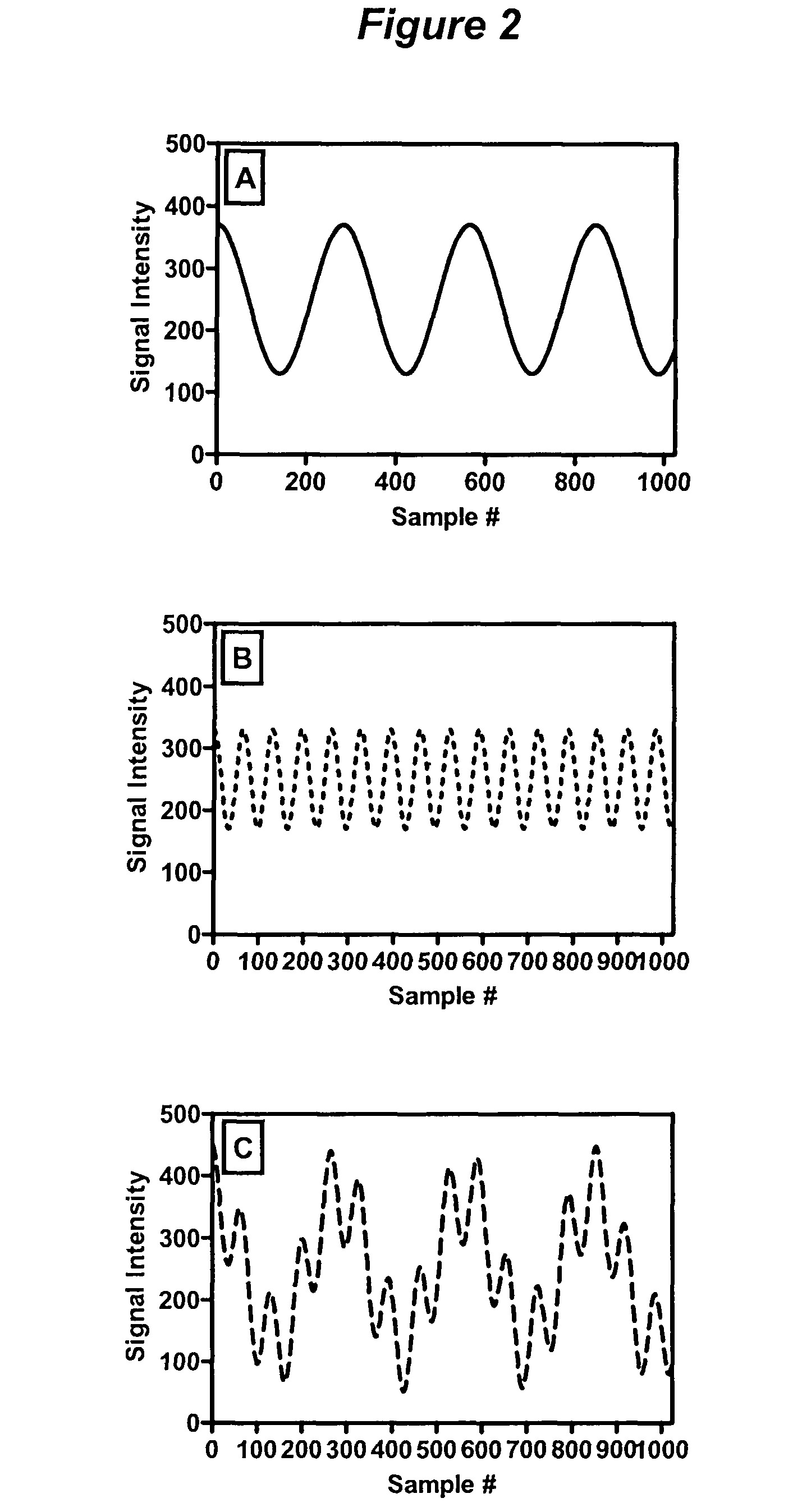Method and apparatus for detecting the presence of microbes with frequency modulated multi-wavelength intrinsic fluorescence
a multi-wavelength, intrinsic fluorescence technology, applied in the direction of microbiological testing/measurement, biochemistry apparatus and processes, etc., can solve the problem of relative shallow sampling penetration depth of samples
- Summary
- Abstract
- Description
- Claims
- Application Information
AI Technical Summary
Benefits of technology
Problems solved by technology
Method used
Image
Examples
Embodiment Construction
[0031]The practice of the invention requires the use of frequency-modulated electromagnetic energies capable of exciting biological material which is intrinsically fluorescent, where electromagnetic radiation is directed from the light source towards the sample, passing through the excitation filters and focusing optics if necessary, to excite the intrinsic fluorophores in the sample. The resulting fluorescence will also be frequency-modulated, with the frequency modulation of said fluorescence emissions being modulated at the same frequency at which it was excited. Using methods known to those skilled in the art, it is possible to separate the resulting contribution to the measured signal at each frequency due to microbial intrinsic fluorescence. Since the relative amount of fluorescent metabolites are coupled in viable (living) cells by cellular chemical reactions (e.g., glycolysis, oxidative phosphorylation, etc.), the relative signal strengths of the background-corrected metabol...
PUM
| Property | Measurement | Unit |
|---|---|---|
| electromagnetic radiation wavelength | aaaaa | aaaaa |
| wavelength | aaaaa | aaaaa |
| wavelength | aaaaa | aaaaa |
Abstract
Description
Claims
Application Information
 Login to View More
Login to View More - R&D
- Intellectual Property
- Life Sciences
- Materials
- Tech Scout
- Unparalleled Data Quality
- Higher Quality Content
- 60% Fewer Hallucinations
Browse by: Latest US Patents, China's latest patents, Technical Efficacy Thesaurus, Application Domain, Technology Topic, Popular Technical Reports.
© 2025 PatSnap. All rights reserved.Legal|Privacy policy|Modern Slavery Act Transparency Statement|Sitemap|About US| Contact US: help@patsnap.com



